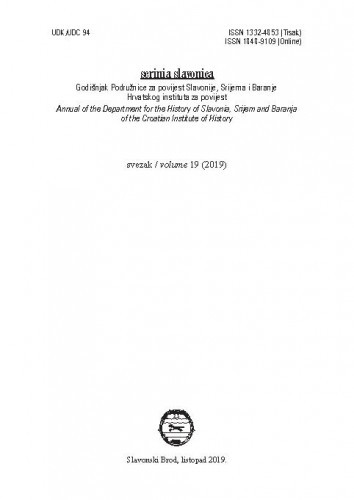U radu je analiziran položaj romskog stanovništva na slavonskom području za vrijeme Drugoga svjetskog rata. Istraživanje je bilo usmjereno na analizu politike državnih i lokalnih vlasti prema Romima, koja je uključivala mjere poput njihovog popisivanja, zabrane kretanja i u konačnici njihove sustavne deportacije u jasenovački logor, gdje je znatan dio njih ubijen. Drugi dio odnosi se na analizu odnosa neromskog stanovništva na slavonskom području prema progonu i stradanju njihovih romskih sumještana, unutar kojeg su opisani slučajevi u kojima je dio Slavonaca izravno nastojao spasiti Rome molbama i drugim intervencijama kod ustaških lokalnih i državnih vlasti.; The Roma population had lived in a significant number in the Slavonian region, especially since the 18th century when they inhabited deserted areas after the withdrawal of the Ottomans. Their life in Slavonia was mostly marked by periods of persecution and assimilation, as was the especially case in the second half of the 18th Century during the rule of the Mary Theresa and Joseph II. Such a repressive policy will have its peak during the Second World War with the coming of power of the Ustasa in the Independent State of Croatia. The Roma will be one of the main victims groups of the Ustasha racial politics. At the same time, almost 40% of Roma had lived in Slavonia during the Second World War, and they will be almost all deported to the Jasenovac concentration camp in mid-1942, where most of them had been tortured and killed. The proportions of such Ustasha policies will be particularly visible after the war, when only about fifty Roma were recorded in this area (1948).
Sažetak

 Scrinia Slavonica : godišnjak Podružnice za povijest Slavonije, Srijema i Baranje Hrvatskog instituta za povijest : 19,1(2019) / glavni i odgovorni urednik Stanko Andrić.
Scrinia Slavonica : godišnjak Podružnice za povijest Slavonije, Srijema i Baranje Hrvatskog instituta za povijest : 19,1(2019) / glavni i odgovorni urednik Stanko Andrić.